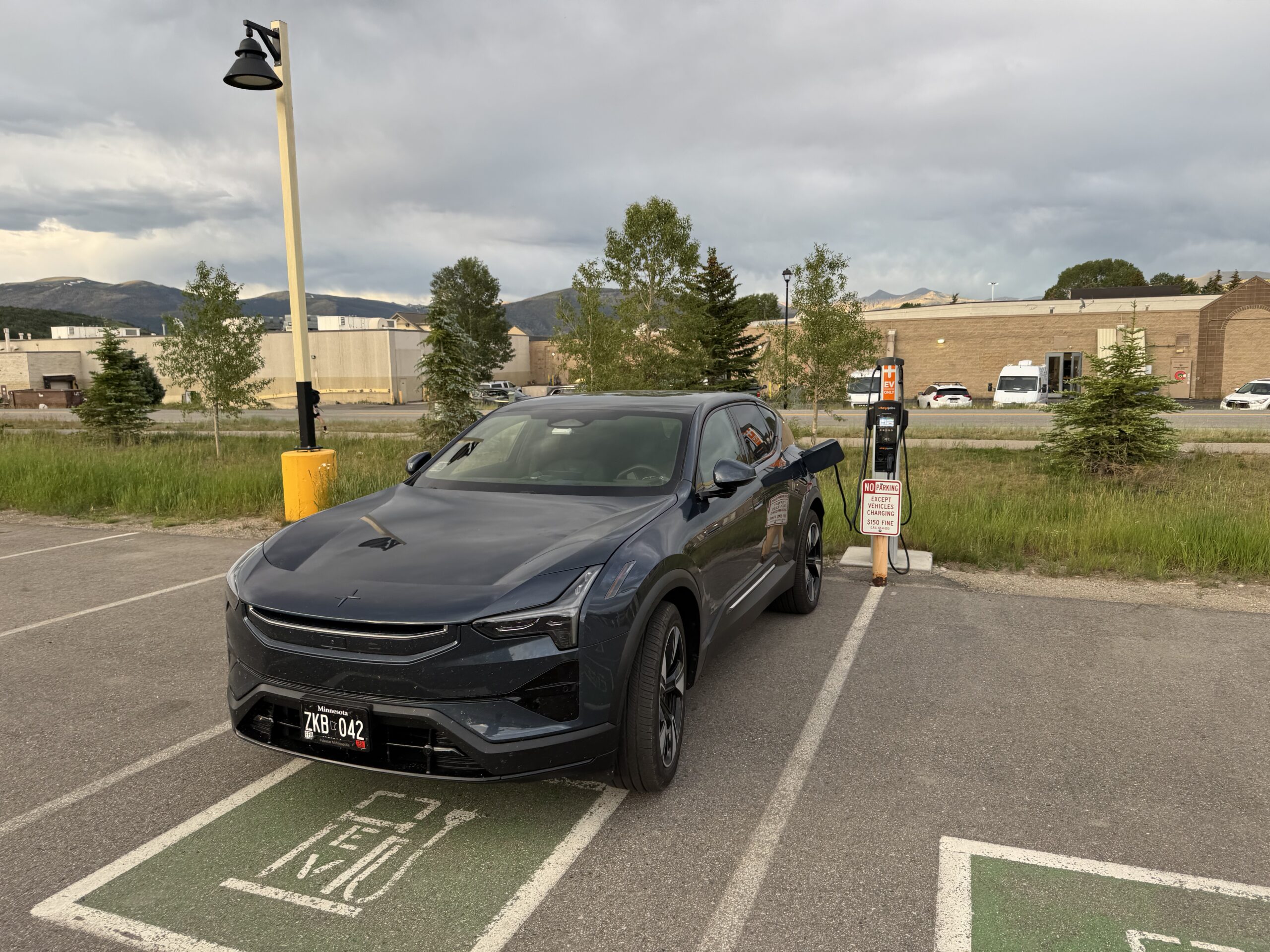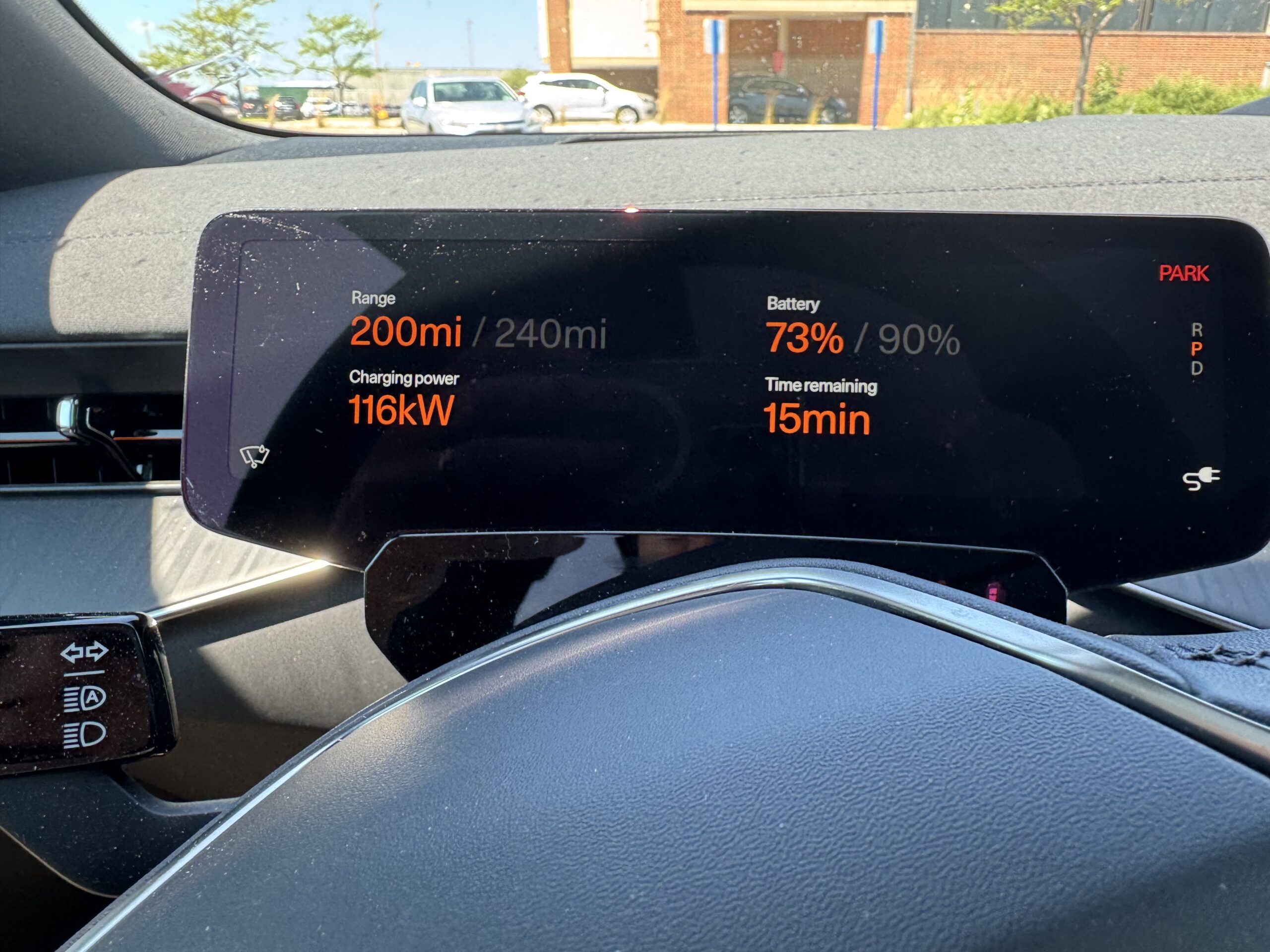
Last Updated on: 18th July 2025, 12:04 am
Key Takeaways
- Polestar 3 is a great roadtripping machine (better than Tesla Model Y in several ways)
- Comfort is next-level with air suspension (but the Model Y is a low bar)
- Charge curve rocks
- Range rocks
- Compatibility with Tesla Superchargers via adapter is great, Electrify America charging needs improvement
- A Better Route Planner (ABRP) native Android Automotive app is great to have, but significantly buggy
- Pilot Assist (lane keeping) is better than Tesla Autopilot in several ways, but driver behavior detection is too aggressive and often wrong
- Software quality in general is not at the same level as Tesla’s, but bugs are in the nuisance severity range

We recently completed a 2,160-mile round trip to Fort Collins, Idaho Springs, and Frisco, Colorado, in our 2025 Polestar 3. With many thousands of miles of Tesla roadtripping under our belts, this non-Tesla road trip was as easy as, and way more comfortable than, many of the Tesla ones. The very first leg set positive expectations for range when we covered 270 miles before stopping to charge. With us needing an earlier bio-break, the score was humans 2, Polestar 1. (Like golf, lower is better!)
The first leg also had the driver testing the tolerance of driver behavior detection while using pilot assist. We were on a 2-lane highway when I deliberately ignored warnings to pay attention to the road by daring to look at the center screen for an extended time of several seconds. The car asserted control and insisted it was going to stop and pull over, despite the driver resuming a full attention position. The squawking and messaging on the instrument panel continued until I wrestled the car to a side road, turned it around, put it in park and asked Karen to get out so we could walk away and allow the car to lock (it won’t lock with someone in the car unless a button is pressed on the screen). This seemed to reset the pilot assist, but the level of annoyance of being unable to look away for more than 1–2 seconds caused me to disable the feature. Fortunately, traffic-aware speed control still operates and the nag level is much lower. I kept pilot assist disabled for the rest of the trip.
I have always found it ironic that these systems require greater driver attention even though their greatest value is to maintain vehicle position in the lane when the driver wants to interact with the vehicle interface (map, etc.). For me, the Polestar implementation has limited value. The Tesla implementation in my 2020 Model Y (v3 FSD computer) was marginally less annoying and the Tesla’s twitchy steering also meant the auto steer was more valuable while the Polestar’s more relaxed steering makes it easier to steer manually. In addition, the Polestar has an active lane keeping aid. Even when toggled off in the UI, this feature continues to work (a bug?) and I’ve decided it is useful feature as a low-nag steering assist.
Range & Charging

Distances between charges continued the pattern of longer practical range in the Polestar compared to our Model Y. Granted, the Y had lost some range by the end (about 10% after 80,000 miles), but its highway range was always a smaller fraction of rated range than most other EVs. Interestingly, the EPA ranges of the two cars are almost the same (310 vs 315 mi). The Polestar has a far larger battery, about 107 kWh usable vs. about 75 kWh for the Tesla. Thus, the Polestar is a far less efficient EV. Trip efficiency was around 390 Wh/mi. For comparison, looking at highway speeds in summer months, the Tesla averaged around 330 Wh/mi. Doing the math, the Polestar’s real-world summer highway range is more like 275 miles vs about 225 miles for the Model Y.



Time spent DC fast charging on the highway totaled a little over 4 hours, with 35½ hours spent driving. Charging was a bit over 10% of the total time spent with the car. This doesn’t count time charging at level 2 chargers at 3 different hotels as the car is left to charge while you do something else. The somewhat lower percentage of time spent charging compared to the Model Y would seem to be down to the charge curve. As the photos above show, the Polestar is still pulling 155 kW at 50% and well over 100 kW at almost 75%. With its bigger battery, these are lower C rates than they would be on the Tesla, but still impressive.
Charging costs are higher on the Polestar due to lower efficiency and higher energy prices. Non-Tesla car owners can buy a Supercharger membership from Tesla to bring down the per kWh rate, and Electrify America also offers memberships for lower per-kWh pricing. I have not done this, considering it not to be worth the trouble. At “full retail,” total charging costs were $302, or $0.14/mile, and the average price per kWh was $0.36. Cost/mile is equivalent to $3.08/gallon gasoline in a vehicle getting 22 MPG. As a reminder, charging at home is still a great deal at about ⅓ the price paid while on the road.
Software Issues
Aside from the pilot assist issues noted above (admittedly, more features than bugs), there have been various audio bugs. Using Google Assistant sometimes works, and at other times, does not seem to hear anything. Apple CarPlay features such as the phone, messages, and Siri also fail to connect to microphone audio and sometimes speaker audio also.
Having ABRP as a native app installed in the car’s UI is a great option, but the implementation is currently buggy. The app started disappearing from the app home screen every time the car was put in park and I’d need to enable it again in the Google Play store. Out west where the cellular connection dropped into LTE from 5G (still with 4 bars), the app froze and later refused to plan routes. At a key maneuver, the app exited to the app settings page causing us to miss a turn. Following a route while driving, the app would display remaining distance in km, even though other parts of the app showed distance in miles. On another occasion, the app showed the arrival time two hours early as though that part of the app was two time zones west of the car. At one point, I tried uninstalling and re-installing the app, but was in a low coverage area so had to wait until the next stop.
Final Thoughts
Overall, the car works very well. The Journey Log app (specific to Polestar) can be used to export trip information that allows detailed analysis of driving and energy use. Apart from the audio issues, the CarPlay implementation is quite good. The 1,600-watt, 25-speaker Bowers and Wilkins audio system lives up to the hype and is really fun when listening to the music. Another fun feature is the air suspension including raised suspension & hill descent control and adjustable feel. The active torque vectoring rear axle gives the Polestar the nimble feel of a much smaller car. Energy displays are useful and even rounding to the nearest 10 miles for predicted range makes sense given the many variables that go into this number. In general, the Polestar gives great confidence in that range numbers change predictably and state of charge projections are pretty accurate. We are looking forward to more relaxing and comfortable road trips in the Polestar 3.

Sign up for CleanTechnica’s Weekly Substack for Zach and Scott’s in-depth analyses and high level summaries, sign up for our daily newsletter, and follow us on Google News!
Whether you have solar power or not, please complete our latest solar power survey.
Have a tip for CleanTechnica? Want to advertise? Want to suggest a guest for our CleanTech Talk podcast? Contact us here.
Sign up for our daily newsletter for 15 new cleantech stories a day. Or sign up for our weekly one on top stories of the week if daily is too frequent.
CleanTechnica uses affiliate links. See our policy here.
CleanTechnica’s Comment Policy
